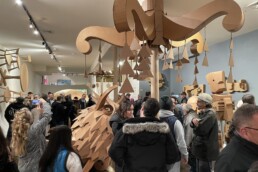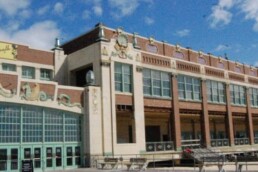
Arts funding took a real hit during the pandemic and crushed many institutions – both large and small – that support arts-centric cities and initiatives.
Funding is a key support for the arts, whether that be live/work space, internships, public art projects or public/private partnerships. Artists are very much like aspiring athletes, only a very few strike it rich, most struggle under the radar, without much more than subsistent income to allow them more time for their passion. How do artist communities survive and what do arts-centric cities do to help support their artists?
Support from the top may be coming. President Joe Biden’s White House recently proposed an increase in funding for the NEA and NEH. Some of his supporters also have proposed elevating the arts into a White House office, similar to the Office of Science and Technology Policy.
Biden said, “We look forward to working with the art and cultural organizations in the big cities, small towns and rural communities, to make art more accessible to people at every age and every background, to lift up more voices and stories, to remember what President Kennedy believed, that in serving their vision of the truth, artists best serve the nation.”










